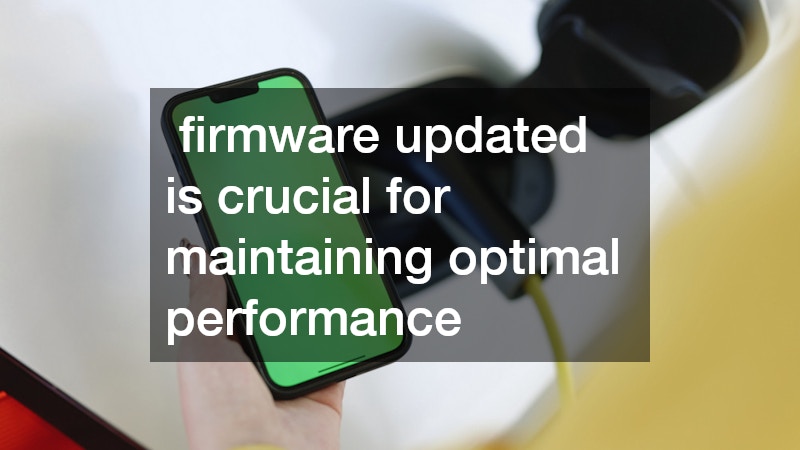

Understanding how to make home charging work for you is essential for electric vehicle owners. This guide will cover some of the most frequently asked questions about setting up and maximizing charging. By the end, you’ll be equipped with the knowledge to optimize your charging setup tailored to your specific needs.
Benefits That Make Everyday EV Life Easier
Charging your electric vehicle (EV) at home offers unparalleled convenience, allowing you to start each day with a full battery without having to make frequent trips to public charging stations. This ease of access means you can recharge your vehicle while you sleep, freeing up your time for other daily activities.
Furthermore, having a home charging station eliminates the need to wait in potential lines at public stations, especially during peak hours when demand is high.
Cost savings are also a significant benefit of home charging. By charging at home, EV owners can take advantage of off-peak electricity rates, significantly reducing the overall cost of charging. Many utility companies offer special rates for EV owners during nighttime hours, further lowering expenses. Over time, the savings on charging costs can accumulate, leading to a more economical transportation solution compared to traditional gasoline vehicles.
In addition to convenience and savings, home charging contributes to environmental sustainability. By integrating renewable energy sources such as solar panels, homeowners can directly power their EVs with clean energy. This integration reduces the carbon footprint associated with driving an electric vehicle, promoting a more eco-friendly lifestyle. Consequently, home charging not only benefits the owner financially and logistically but also supports broader environmental goals.
What to Know Before Making Your EV Charging Choice
Choosing the right home charging station starts with understanding the power levels available for residential charging. Level 1 chargers, which plug into a standard household outlet, are generally slow but sufficient for those with minimal daily vehicle use. However, Level 2 chargers require a 240-volt outlet and provide faster charging times, making them ideal for households with higher daily mileage needs. Evaluating your daily driving habits can help determine which power level suits your situation best.
Compatibility is another critical factor in selecting a home charging station. Not all chargers are compatible with every electric vehicle model, and it’s essential to ensure that the station you choose supports your specific make and model. Many charging stations are designed to be universal, accommodating most EVs on the market. Nevertheless, verifying compatibility with the manufacturer or through customer reviews can prevent potential installation issues or the need for additional adapters.
Additionally, smart features in a charging station can greatly enhance your home charging experience. Many modern chargers come equipped with Wi-Fi connectivity, allowing you to monitor charging sessions remotely and set schedules to capitalize on off-peak energy rates. These smart technologies not only improve user convenience but also can optimize energy efficiency, ensuring that home charging is as cost-effective and seamless as possible. Invest in a charger with these capabilities to future-proof your EV setup.
How to Prepare for Installation Like a Pro
Proper installation of a home charging station necessitates specific electrical requirements that must be met to ensure safety and functionality. Typically, installing a Level 2 charging station requires a compatible 240-volt outlet, which may not be available in all homes. Before installation, it’s crucial to evaluate your home’s electrical infrastructure to accommodate the additional demand on the system. An electrician can assess the electrical service panel to determine if updates or expansions are required.
Professional installation is highly recommended for setting up a home charging station. Licensed electricians can ensure that the installation complies with local codes and standards, reducing the risk of electrical hazards. They can also provide expert advice on the optimal placement of the charging station to facilitate easy access while maximizing convenience. Professional installation offers peace of mind, knowing that the job has been completed safely and correctly.
Beyond the necessary electrical work, consideration should be given to the physical positioning of the charging unit. The charger should be installed in a location that allows for seamless connection to the vehicle while parked. Many homeowners choose garage installations for added protection from weather elements, although outdoor installations with appropriate weatherproofing can also be suitable. Planning the installation location is crucial for avoiding potential inconveniences with daily use.
Get the Most Out of Your EV Setup
To maximize the efficiency of home charging, it is essential to adopt smart charging practices that leverage technology to conserve energy and reduce costs. Implementing a charging schedule to coincide with off-peak electricity rates can lead to substantial savings over time. Many EVs and charging stations have built-in scheduling features that allow you to automate this process, ensuring your vehicle is charged economically without requiring manual oversight.
Energy management techniques go hand-in-hand with smart charging practices to optimize home charging efficiency. By monitoring and managing your household’s overall energy consumption, you can prevent overloading the system and avoid increased electricity bills. Some utility providers offer time-of-use plans that align with solar power generation, offering further savings and promoting sustainable energy use. Utilizing these plans in conjunction with EV charging can be an effective strategy for cost and energy optimization.
Additionally, keeping your EV software and charging station firmware updated is crucial for maintaining optimal performance. Manufacturers regularly release updates that can improve efficiency, expand capabilities, and enhance compatibility with new technologies. Staying current with these updates ensures that your home charging setup benefits from the latest advancements, contributing to long-term efficiency and reliability.





